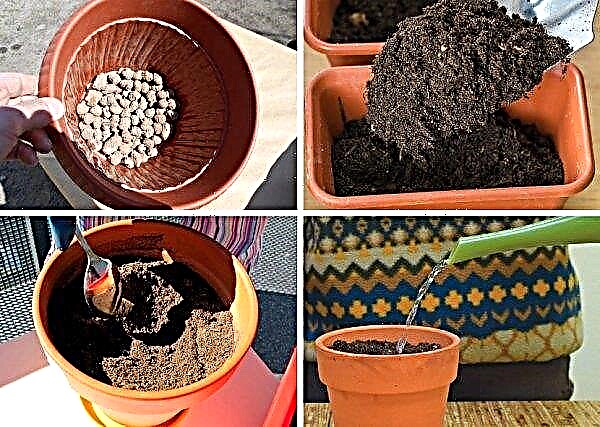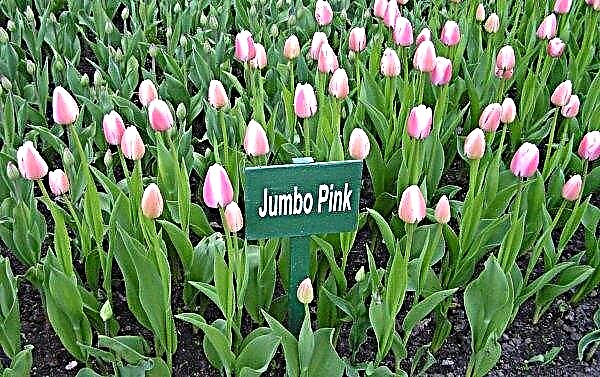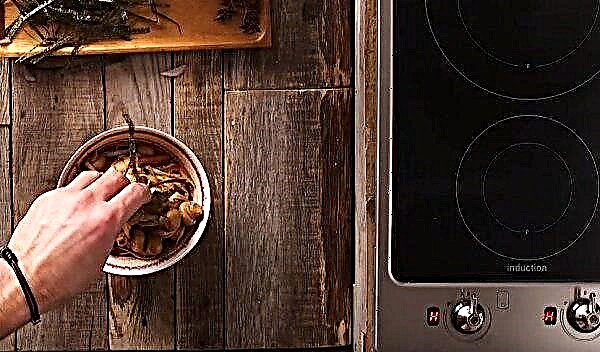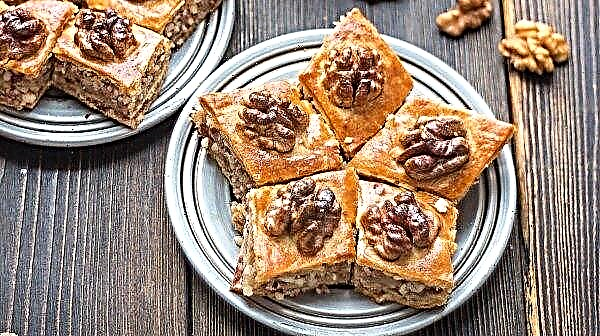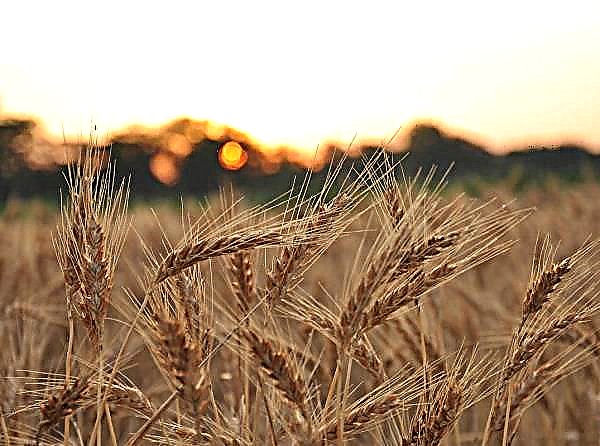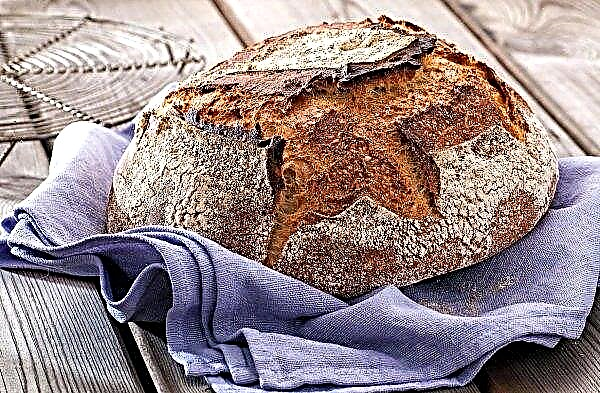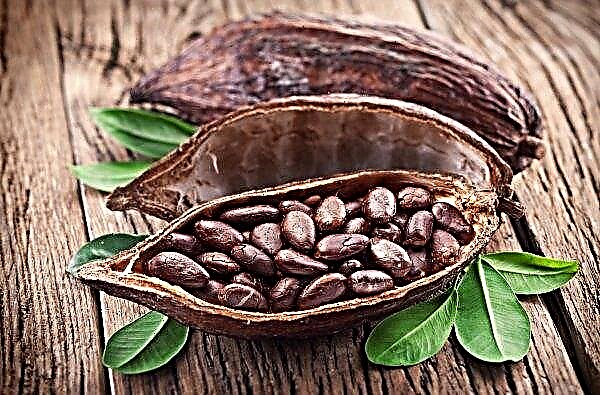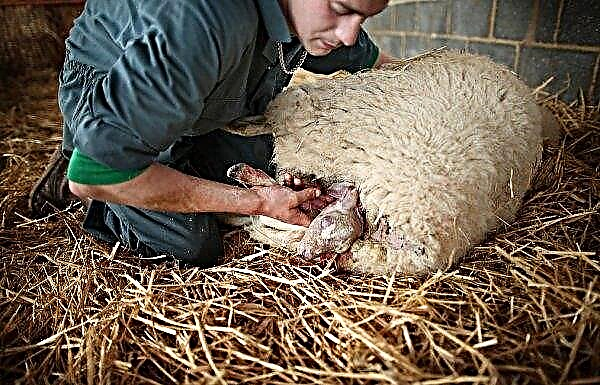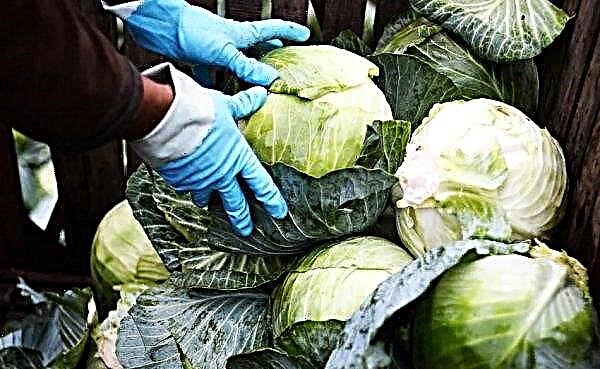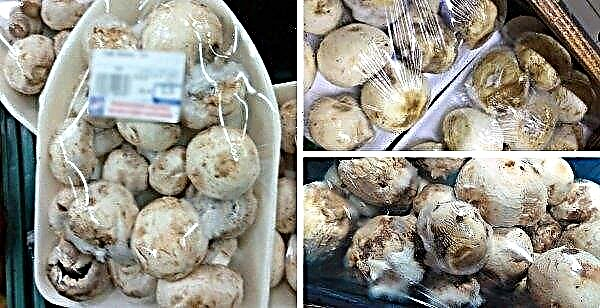Characterizing garden crops, for some reason everyone is used to touting the taste and benefits of the fruits of trees and shrubs. But the crown of plants, although it does not differ in taste, is able to bring no less benefits to the human body. In particular, walnut leaves deserve attention, from which they prepare a variety of medicinal drinks that sometimes help to cope with even very serious diseases.
The chemical composition of the leaves
To understand how much benefit walnut leaves can bring, one should study their chemical composition, which has something to be “proud of”.

This includes elements such as:
| vitamin C | accumulates in leaves by May, strengthens blood vessels, strengthens protection against viruses |
| vitamin b1 | has the main effect on the normalization of nerve cells |
| tocopherol (vitamin E) | stabilizes hormones, increases resistance to viruses |
| vitamin P | stimulates the functioning of the liver, has a general tonic effect |
| retinol (vitamin A) | rejuvenates cell tissue, improves vision and strengthens tooth enamel |
| amino acids | The “building material” of the protein that makes up the human body plays an important role in the work of all systems of internal organs |
| carotene | antioxidant and immunostimulant; |
| essential oils | stimulate digestion, promote the removal of excess fluid from the body, promote detoxification of the body |
| alkaloids | actively affect intestinal function, blood pressure level, stimulate the respiratory system |
| yuglon | natural antibiotic, which has a bactericidal effect, helps the body to actively fight against pathogens of staphylococci, fungi, dysentery and tuberculosis |
| minerals (calcium, iodine, magnesium, sodium, phosphorus, potassium, etc.) | are part of all body cells, a sufficient number of them slows down the aging process, maintains acid-base balance, has a positive effect on metabolism |
Benefit and harm
Looking at the rich chemical composition of walnut leaves and the mass of useful properties that its elements possess, there is no doubt that the product is capable of exerting a significant therapeutic effect on the human body. But before embarking on self-medication, it is recommended to consult a doctor and be sure to follow the rules for using walnut leaves.
Medicinal properties and indications
Means based on walnut leaves have a lot of useful properties, including: bactericidal, blood-purifying, general strengthening, anti-inflammatory, choleretic, diuretic.
- It is useful to take them for many diseases, in particular, they will help to cope with such as:
- gastrointestinal tract diseases;
- atherosclerosis of blood vessels;
- diabetes;
- internal bleeding;
- gout;
- hemorrhoids;
- psoriasis;
- varicose veins.
In addition to this list, it should be noted that infusions and decoctions perfectly help to overcome colds and ailments of a viral nature. Also, taking walnut leaf preparations will be a good preventative measure. It should also be noted the ability of the drug to fight parasitic creatures in the body, so it gives an effective result in treating the body for helminths (worms).
 In addition to internal use, decoctions of walnut greens are prepared to treat external skin defects.
In addition to internal use, decoctions of walnut greens are prepared to treat external skin defects.
With boils and acne, washing twice a day helps. If there are cuts or other non-healing wounds for a long time, you need to moisten cotton wool or gauze with plenty of broth and apply to the affected area. The compress is held for about 15 minutes, and after removal, the skin is not washed or wiped. This procedure should be repeated for several days.
Did you know? Since the 17th century, military doctors have used walnut leaves as hemostatic and disinfecting dressings.
Contraindications
A contraindication is the individual non-perception by the human body of any substances contained in the leaves. You also need to consider that taking drugs based on this raw material should be exclusively in compliance with acceptable standards. The composition of the leaf plates contains a lot of iodine, and this microelement is useful for the body only in certain dosages.
 Exceeding the allowable intake can lead to headaches, dizziness, general weakness of the body.
Exceeding the allowable intake can lead to headaches, dizziness, general weakness of the body.
Another contraindication is thrombophlebitis - a disease accompanied by the formation of blood clots in blood vessels. Since walnut leaves contain substances that contribute to blood clotting, it is not worth taking them to people with symptoms of the disease.
Another warning concerns the use of tinctures. Since this product contains strong alcohol in its composition, it is contraindicated for women during pregnancy and lactation, as well as for children and people suffering from liver diseases.
Walnut leaf application
Today, many recipes for the preparation of medicinal products have been invented, the basis of which is hazel green. Most often, decoctions and tinctures are prepared from them, which are suitable both for internal use and for external use in the form of grindings, baths or compresses.
How to harvest and store
Harvesting of leaves begins in May - June, when all the beneficial substances are concentrated in them. Especially a lot of greens in this period accumulates iodine - a substance that stimulates the cells of the immune system and regulates metabolism. You need to collect leaves in dry weather, tearing leaf stalks without stalks.
They are quickly dried, spread out under a canopy in a ventilated place. Wet foliage can quickly turn black and lose its healing properties. Drying lasts until the leaves break easily. It is better to store raw materials in a cloth bag in a ventilated room or glass containers.
Important! Walnut leaf plates must be clean. The presence of wax coating or spotting indicates that the tree is affected by a fungal infection, and its leaves cannot be used.
How to brew
Means based on nut greens can be prepared in different ways, depending on the method of application and the disease that requires treatment. In most cases, decoctions and tinctures are used, but you can make teas, compresses and other healing potions.
Tincture
To prepare the tincture of the leaves will require high-grade alcohol, as the most often taken vodka.

You need to cook as follows:
- Pour 50 g of crushed leaves into a glass container (jar, bottle).
- Pour raw materials of 0.5 liters of vodka.
- Cork and send to a dark place.
- Insist for 15 days.
- Filter the tincture through gauze or cotton wool, after which it can be used.
Tincture is taken to normalize the functioning of the gastrointestinal tract, as well as to relieve pain in the stomach. To do this, use 3-4 drops of a diluted in water 3-4 times a day.
Did you know? Imupret medical product is made from walnut leaves, which prevents acute infectious diseases, and in case of an existing disease, it reduces the time of recovery.
Decoction
A decoction of walnut leaves is prepared in different ways, depending on whether it will be used for internal use or for external use.
To prepare a product that will later be used inside, you need:
- Grind the dried leaves.
- Take a tablespoon of raw materials and pour into a pan.
- Pour with two glasses of water and put on fire.
- Bring to a boil, tighten the gas and cook for another 15 minutes
- Remove the pan from the heat, cover and let it brew for another 1 hour.
- Strain the product through gauze or cotton wool.
 A decoction of the leaves is also used in the form of lotions in order to accelerate the healing of wounds; it helps well with rickets in children and many other ailments.
A decoction of the leaves is also used in the form of lotions in order to accelerate the healing of wounds; it helps well with rickets in children and many other ailments.
The concentration of such a tool should be much larger, therefore, it is prepared as follows:
- Pour 0.5 liters of water into the pan, bring to a boil.
- Pour 4 tbsp in boiling water. l chopped walnut leaves, boil over low heat for 10 minutes.
- The product must be infused for another 40 minutes, after which it must be filtered.
Against cough
Walnut leaf juice has astringent and expectorant properties. This fact indicates the benefits of their use in coughing. A decoction is prepared from the leaves for oral administration, which should then be taken warm 3 times a day for half a glass. The duration of treatment can be determined independently, depending on how you feel, but on average it is 5-7 days.
With diabetes
Normalize sugar levels will help tea from the leaves. Need 1 tbsp. crushed raw materials brew 1 cup boiling water, insist for 10 minutes and strain. This portion is designed for one reception. Since in order to achieve a healing effect, you need to drink a glass of tea 3 times a day, you can immediately prepare the product for a day, increasing the number of components by 3 times.
 You must complete 2-3 courses of 7 days, while you must observe the interval between them 3-4 days.
You must complete 2-3 courses of 7 days, while you must observe the interval between them 3-4 days.
With gout
People suffering from gout should take into account the following recipe: you need to take chopped walnut leaves in equal parts, celandine grass and mix thoroughly. Now you need 1 tbsp. pour this mixture into a jar and pour 600 g of boiling water, cover and insist for 30 minutes. Take 3 times a day on an empty stomach, 1 glass.
With hemorrhoids
With hemorrhoids, a decoction of leaves is prepared, which is then used for compresses. Need 3 tbsp. pour 400 g of boiling water on the leaves, boil for 15 minutes, and then strain and cool. Next, they take cotton or gauze, dipped profusely in the product and apply to the affected area. The compress must be kept for 30 minutes. The procedure is useful to carry out 2 times a day. You do not need to wash the skin after the procedure.
With psoriasis
For the treatment of psoriasis, it is best to prepare the juice from the greens of a nut. To do this, it is advisable to take fresh foliage. They wash it well and knead it with your hands until the juice appears. With a liquid, you need to thickly smear a painful area of the skin or make a compress, moisten gauze in juice and apply to an ulcer.
 It is advisable not to remove the bandage within 1 hour, and after removing the juice remaining on the skin should not be washed off. Compresses should be applied no more than 1 time per day.
It is advisable not to remove the bandage within 1 hour, and after removing the juice remaining on the skin should not be washed off. Compresses should be applied no more than 1 time per day.
From varicose veins
The main thing that needs to be achieved in the treatment of varicose veins is to stimulate blood flow and improve vascular elasticity. Tea will help in this. To cook it, you need to take 2 tbsp. leaves, brew 1 liter of boiling water and leave for an hour. Then the product is filtered and treatment begins.
Tea should be drunk for 1 month. Every day you need to drink 600 ml of infusion, dividing this amount into 3 doses. After completing the course, a break is made for 1 week, then it is advisable to repeat it again.
Important! In the treatment of varicose veins, smoking should be abandoned, since tobacco increases venous pressure and destroys the walls of blood vessels.
From parasites
The juice of walnut leaves inhibits parasites. It helps to eliminate helminths from the digestive tract, liver and bile ducts. Means based on leaf blades are used to combat all parasitic infections, including ascariasis, enterobiasis, trichinosis.
Check out

For treatment I use alcohol tincture (for how to cook, see p. "Tincture").
It must be taken within 6 days according to the following scheme:
- first day: 1 drop dissolved in ½ cup of water, 3 times a day before meals;
- from the second to the fifth day: 2 drops 3 times a day before meals;
- sixth day: 1 hour each of the drug dissolved in ¼ cup of water, 3 times a day.
Taking the drug, each dose should be drunk slowly for 15 minutes. If the patient's body weight is over 80 kg, the amount of tincture in each serving can be doubled.
With angina and stomatitis
To relieve symptoms of angina and stomatitis, you need 5 g of dried leaves, pour 250 g of boiling water, leave for 20 minutes and strain. This means rinse the throat and oral cavity 3 times a day. As a rule, the result will be noticeable on the second day, but do not stop - it is better to take a decoction during the week.

Walnut leaves - an effective tool that helps in the treatment of both simple and complex diseases. This is confirmed by the fact that people knew about its miraculous power many centuries ago. However, when starting treatment, be sure to pay attention to contraindications and do not neglect them, since any medicine can turn into poison under adverse conditions.


